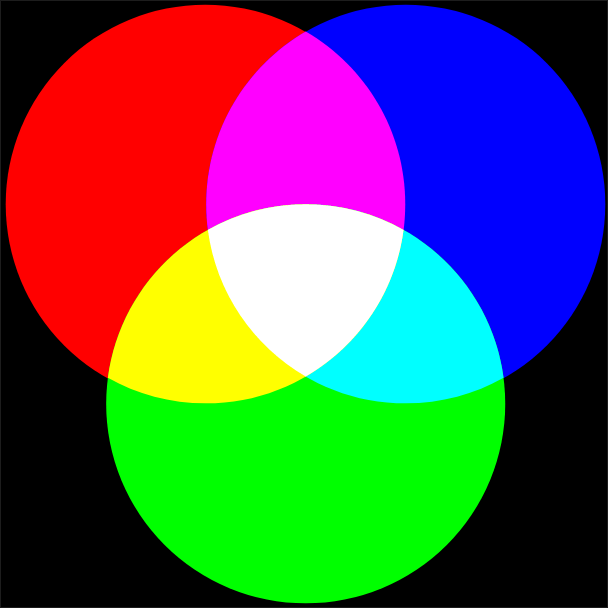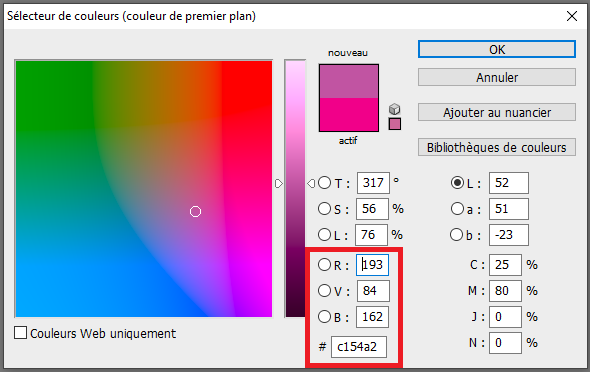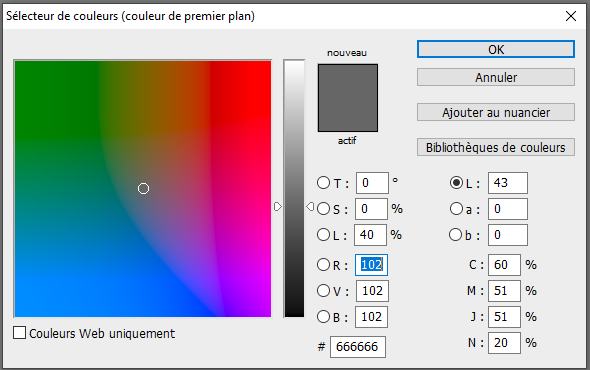Additive synthesis
The principle of additive color synthesis consists in striving to reconstitute, for the human eye, the equivalent (appearance) of any visible color, by the addition of light from three monochromatic sources red, green, blue.
A little theory
Additive synthesis concerns all mixtures of colors of light origin such as spots, trichrome projectors, screens, scanners, digital cameras, etc ... and is based on the principle of colored light input.
- In additive synthesis, red, green and blue are the primary colors
- When we add the three components red, green, blue (RGB) to 100%, we get white
- The absence of component (light) gives black.
- The addition of two by two of these primary colors makes it possible to obtain the secondary colors (complementary colors)
- Cyan: green and blue light, complementary to red
- Magenta: red and blue light, complementary to green
- Yellow: green and red light, complementary to blue
Examples of applications
Here are two examples of the use of additive synthesis:
| Displaying a screen | Light spots Red green blue |
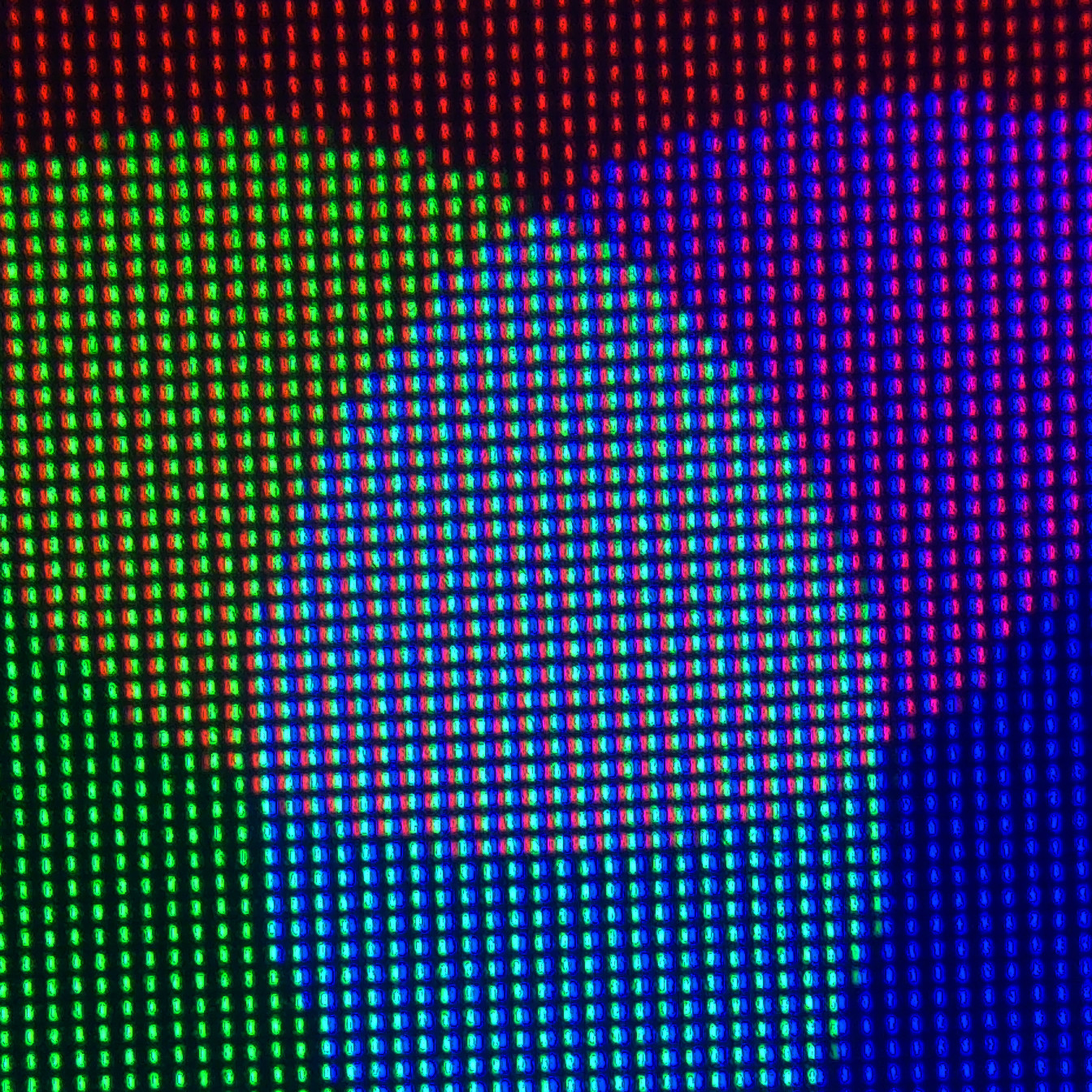 |
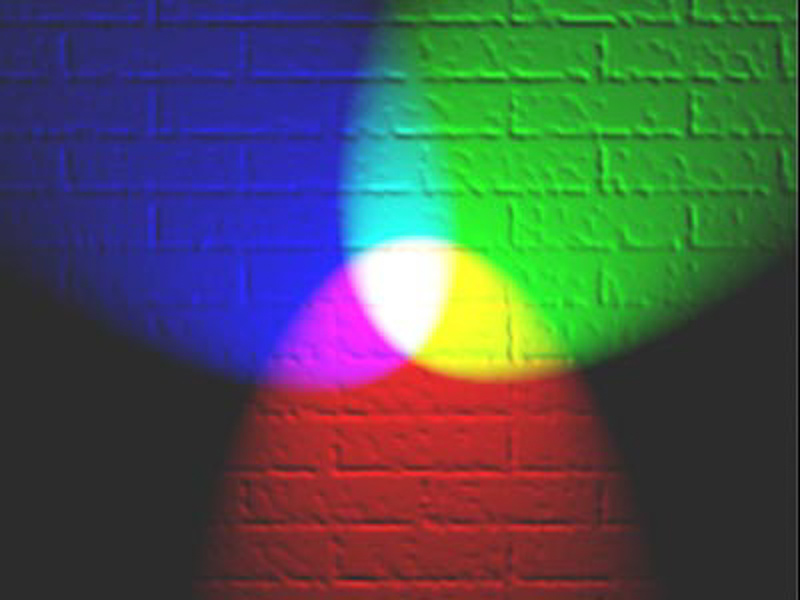 |
If you have the curiosity to take a magnifying glass or a thread count, and you magnify a white area of your screen, you will see that the white is composed of red, green, blue pixels having a high light intensity.
RGB encoding
When you create an RGB color in your favorite editing software, the RGB colors are encoded from 0 to 255 or in hexadecimal from 000000 to FFFFFF (RGB color for the web)
This is because in computing, computers use binary information (0 or 1) called bit as a basic element and 8-bit "words" called byte .
One byte is used to reproduce 256 combinations corresponding to 2 8 or a series of eight 0 or 1 ranging from 00000000 to 11111111.
To code a color in RGB, red, green and blue are coded from 0 to 255 or 256 shades per primary
The combination of the three RGB primaries represents 256x256x256 = 16,777,216 different colors.
That is much more than the 8 million colors that the human eye is capable of dissociating.
Regarding the hexadecimal code, red, green and blue are coded on two characters from 0 to F, ie 16x16 = 256 shades.
Example:
Red = c1, Green = 54 and blue = a2 will give the color coded in hexadecimal # c154a2 equivalent to RGB (193, 84, 162)
RGB Gray
An important concept in the field of calibration is the control of gray neutrality.
Whether for monitors, cameras, scanners or printers, a well-calibrated device should be able to reproduce neutral grays.
To get neutral gray in RGB, red, green, and blue must have the same value.
For example,
A dark gray will have an RGB value of 20, 20, 20
A medium gray will have a value of 128, 128, 128
A light gray will have a value of 80, 80, 80
As a reminder, RGB white will have a value of 255, 255, 255 and black 0, 0, 0.
